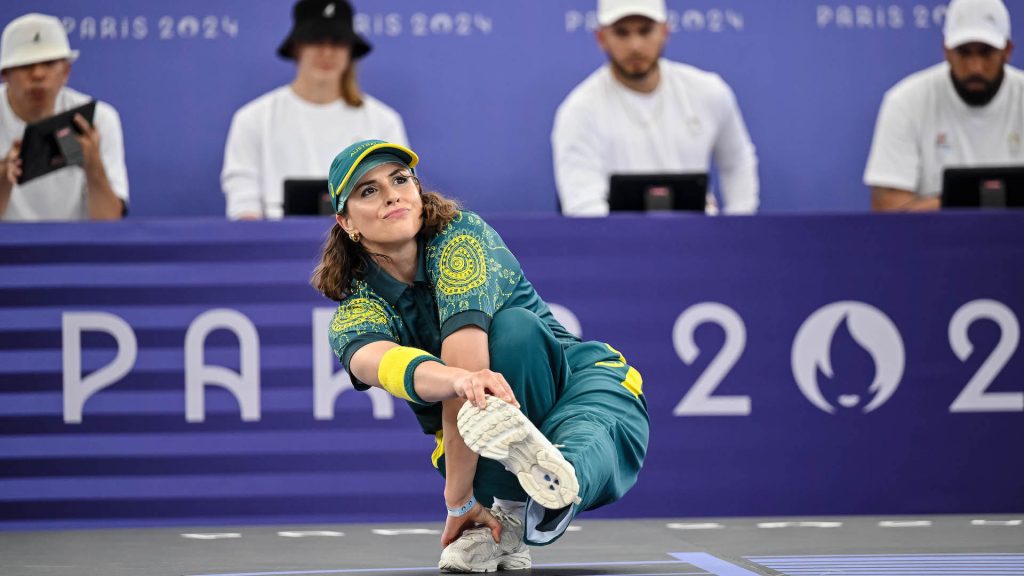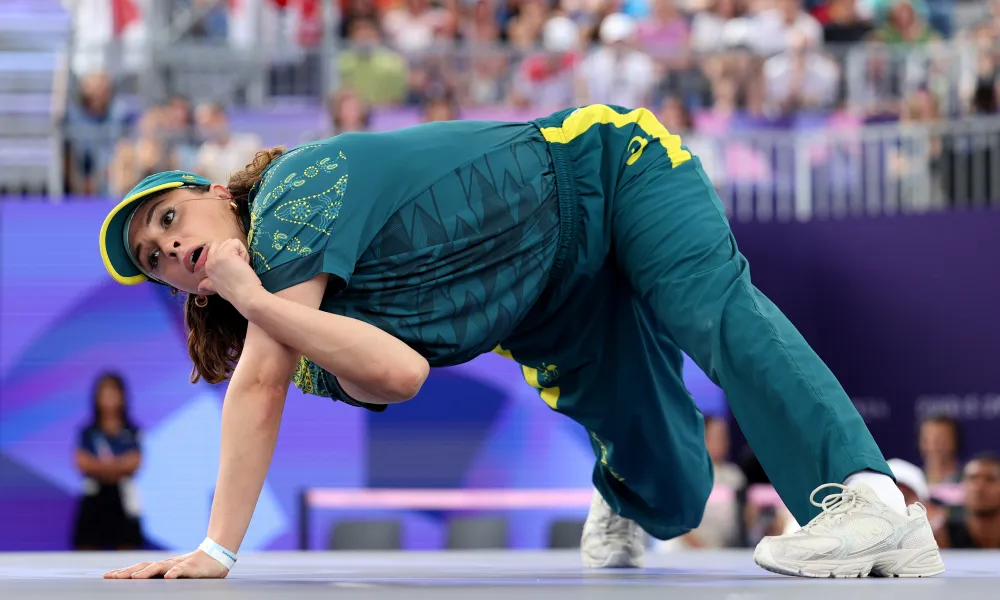Breaking into the Olympics was a historic moment on Friday as Dr. Rachael Gunn an Australian breakdancer, known as B-girl Raygun, showcased her skills in Paris.
At 36, this Sydney-based professor brought a distinctive style to the new Olympic sport of breaking, marking a notable shift from the usual street-style dance attire seen in her younger competitors.
A Unique Approach to Breaking
Dr. Gunn, with a background in ballroom, jazz, and tap dancing, stood out in her green track pants and polo shirt, diverging from the typical breaking gear. Her performance, featuring a kangaroo hop and a move resembling swimming, highlighted her unique artistic approach.
Although the judges awarded 18-0 to her opponent, Logistx from the U.S., Gunn’s originality made an impression on the audience and online viewers.
Despite the judges’ decisions, which did not favor the Australian breakdancer, her performance quickly gained attention on social media. Critics were quick to voice their discontent, questioning the choice of Gunn as Australia’s representative.
However, her supporters noted the creativity and personal flair she brought to the stage.
The Critics and Supporters

Gunn’s performance received mixed reactions. Some viewers were disappointed, comparing her appearance unfavorably to other competitors.
One critic on X (formerly Twitter) expressed frustration over the selection process, while another was embarrassed for Australia.
In contrast, there were also those who appreciated Australian breakdancer Gunn’s artistic expression. One viewer even compared her performance to Usain Bolt’s iconic sprint, praising her distinctive moves as a highlight of the competition.
The Broader Impact of Breaking
The inclusion of breaking in the Olympics is part of a broader effort to attract younger audiences. With roots in New York’s hip-hop culture, breaking has evolved significantly, and its Olympic debut reflects this evolution.
Some pioneers of the sport, like Odylle Beder, have expressed concerns about the competition format, feeling it does not fully capture the essence of breaking.
For the Australian breakdancer, the Olympic stage provided a platform to explore and present her creative side. She emphasized that her performance was driven by artistic expression rather than athletic prowess.
Her approach focused on showcasing originality and creativity, even if it did not align with traditional competitive expectations.
Breaking’s Future in the Olympics
Breaking’s future in the Olympic Games remains uncertain. While it made a significant splash in Paris, it is not included in the 2028 Los Angeles Games.
This decision has sparked disappointment among some in the breaking community, who feel that the sport deserves greater recognition.
Dr. Gunn’s participation highlighted the diverse nature of breaking and its potential for artistic expression on a global stage. Despite the criticisms, her performance served as a reminder of the sport’s roots and its capacity to push boundaries and challenge conventional norms.
Raygun’s Legacy
As the Paris Olympic competition concluded, Dr. Rachael Gunn’s debut was marked by a mixture of criticism and acclaim. Her performance, though not scoring points with the judges, succeeded in bringing a fresh perspective to breaking.
Her artistic approach and dedication to showcasing her unique style demonstrated the evolving nature of the sport and its potential for future Olympic events.
The Paris Games offered a glimpse into the diverse world of breaking and the different ways athletes interpret and present their craft. While the sport may not return to the Olympics in 2028, the impact of performances like Gunn’s will continue to influence the broader conversation about breaking and its place in the world of competitive sports.






